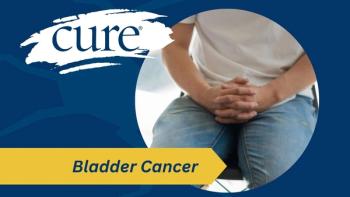
Understanding New Treatment Options for Patients with Relapsed/Refractory Multiple Myeloma
The complexity of multiple myeloma can make it difficult to treat, but with complexity comes more avenues for researchers to explore what treatments work best. Recently, CURE® spoke with an expert from Dana-Farber Cancer Institute on what patients can expect to see from the clinical setting.
There has been tremendous growth over the years in terms of treatment options for patients with multiple myeloma. That growth has extended to patients in the relapsed and refractory setting who often face an even more complex disease than patients with traditional multiple myeloma.
This is as a result of patients with relapsed or refractory multiple myeloma having double the mutations that patients with newly diagnosed multiple myeloma have, according to Dr. Paul G. Richardson. This complex disease has also led to investigators looking at a wide range of treatments to target many different patients. There are multiple treatments approved by the Food and Drug Administration with more in clinical trials that patients have potential access to. The field is also looking to grow by targeting mutations through combination treatments that can help reduce side effects with smaller doses of each drug, explained Richardson at CURE®’s
CURE® recently spoke with Richardson, clinical program leader and director of clinical research at the Jerome Lipper Multiple Myeloma Center at Dana-Farber Cancer Institute, and discussed the main aspects patients with relapsed/refractory multiple myeloma should know about.
CURE®: In your panel presentation you mention that multiple myeloma is complex. What makes it complex and what's the difference for patients when they have relapsed or refractory disease?
Richardson: Multiple myeloma is an incredibly complex illness, both in its manifestations and in the pathobiology that underlines it. Its genetics are highly complex at diagnosis, and relapse due to the mutational thrust that's inherent to the disease, as well as in fact, in some of the therapies we might use, genomic events can multiply. And then they can also be an entity called clonal evolution. At diagnosis, there are 5,000 mutations in a given patient’s multiple myeloma, but here at relapse, after stem cell transplantation, induction therapy and maintenance, this patient's whole genome sequencing reveals over 12,000 mutations. So, that is a reflection of some of the complexity of the pathobiology, which means that relapse refractory strategies have to be on the one hand, biologically derived, and in that sense, targeted, but you can understand that a specific, genetically targeted approach is extremely challenging in the setting of so many mutations.
And with so many of those mutations, is that why these combination treatments are so promising?
Combination strategies are absolutely essential. We have 12 approved drugs at the moment, and obviously, how do we sequence them? How do we combine them to throw a big net around this disease and shut it down? That becomes extremely important.
The options summarized in the presentation, between proteasome inhibitors, immunomodulatory drugs, and then critically, the antibody targeting approaches. Now, the targeting approaches with antibodies are very interesting because they incorporate daratumumab, but now most recently Sarclisa (isatuximab). And the data that support this are the so-called ICARIA trial with pomalidomide and dexamethasone as a backbone, with Sarclisa in one arm of the study, and pomalidomide, dexamethasone as the standard of care in in the control group. What we were able to show through this combination approach is remarkable activity. Now the important point about Sarclisa is that it obviously targets CD38, but it has a unique epitope, and that actually sets it apart from daratumumab. And it targets an actual enzyme uniformly expressed on myeloma cells through the CD38 mechanism. But importantly, there is more of an aphotic effect that it has, as well as this inhibition of CD38 enzymic activity. So, in addition to the immunological mechanisms, there are these direct effects that are qualitatively stronger with Sarclisa preclinically.
Now in terms of clinical activity, what we see is that when you can bear Sarclisa, we see almost a doubling of progression free survival (PFS). And we also see this in whether patients have two or three prior lines of therapy, and not surprisingly, you see a doubling of response rate approximately reflecting that PFS benefit. Very importantly, there's also a trend in survivorship pointing clearly to the favorability of the three drugs versus the two and reflecting how Sarclisa is tolerated. There is no significant change in global quality of life or global health scale as a quality-of-life measure over time. So as a result of this, isatuximab was FDA approved, and very importantly going forward there is now very exciting data around the use of Sarclisa and carfilzomib, which shows similarly striking benefit in favor of Sarclisa, carfilzomib and dexamethasone.
In the relapsed/refractory setting, are side effects for treatments worse than patients with traditional multiple myeloma. Or are a lot of these combination treatments showing that they're reducing some of the side effects?
The good news is that combination approaches can allow the side effect profile to be much more manipulated and handled without losing efficacy. So, in other words, if you use three or four drugs together, you can have lower doses of each to achieve much more. Having said that, sometimes it's appropriate to deploy a single agent or a doublet to try and really bring disease under control if a particular platform has failed a patient. I guess the short answer is it very much depends, I would say that generally speaking tolerability tends to be best earlier than disease for a variety of reasons, because responses are quick and patients also obviously have not had to experience the amount of therapy that treatment-exposed relapsed/refractory patients do. And because of that, the treatment-exposed relapsed/refractory patients can be more vulnerable to the side effects.
So, that's why sometimes in the relapsed refractory setting these side effects can appear magnified. Having said that, patients are experienced, and they know what they're feeling, and they know why. Sometimes, from a symptomatic point of view, being forewarned is forearmed, and therefore, you're much more sort of experienced at managing side effects. So, it's a very dynamic situation, in terms of tolerability. In other words, there are some aspects of tolerability in early disease that are more challenging than in later disease, but conversely, because a patient has been more heavily pretreated relapsed refractory disease, certain side effects may be more challenging.
For more news on cancer updates, research and education, don’t forget to





